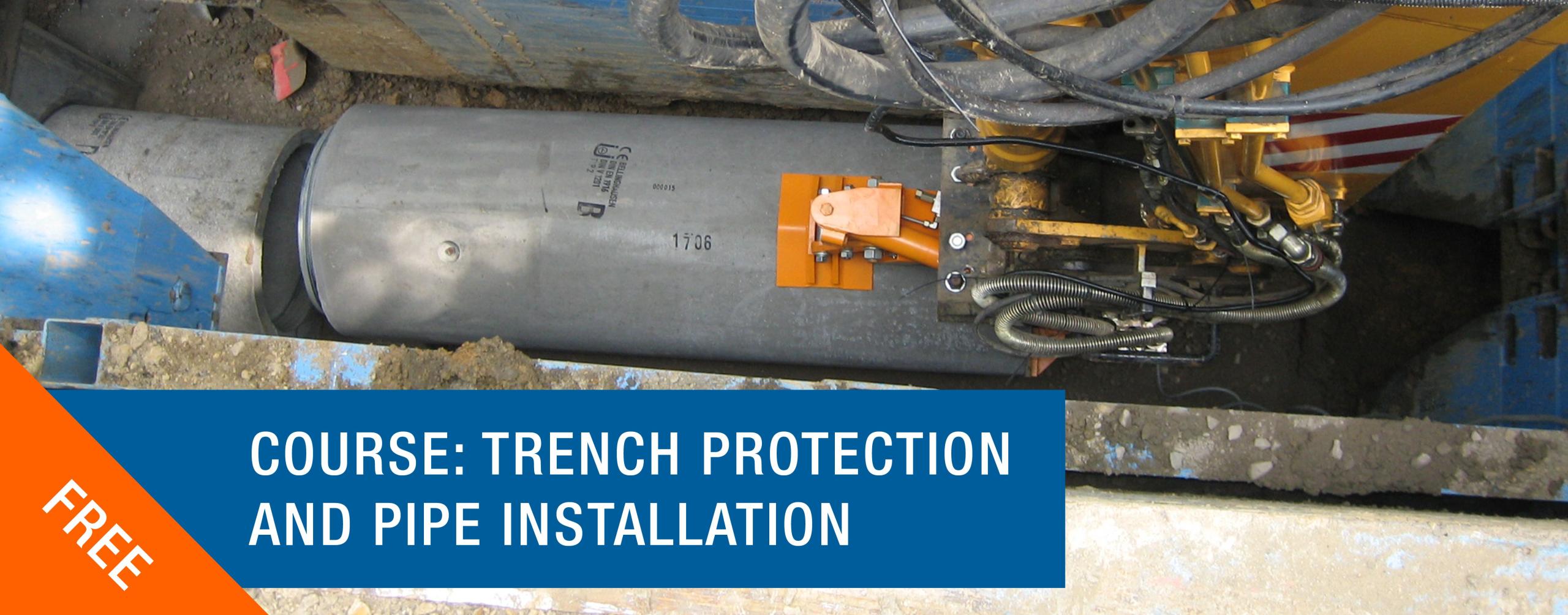With the world’s largest e-learning programme for the “Construction and Rehabilitation of Sewer Systems” and a unique certified online training programme
Acquire a ‘certificate of professional competence’ or an ‘expert certificate’ at the consultant level where you want and when you want.
This knowledge transfer takes place using the UNITRACC platform, which has received several awards including the European e-learning award. You can expect a high-quality learning experience, which includes the following components:
- Interactive training content
- Individual start date
- 10 courses in three thematic blocks
- 30 video blogs
- 10 self-tests
- 10 individual online meetings
- Final exam and evaluation
- Courses covering 10 different subject areas
- Approx. 4,000 learning steps units
- Up to 376 hours of learning time across all the courses
- Approx. 6,000 graphics and images
- Digital reference books for reading and exam preparation
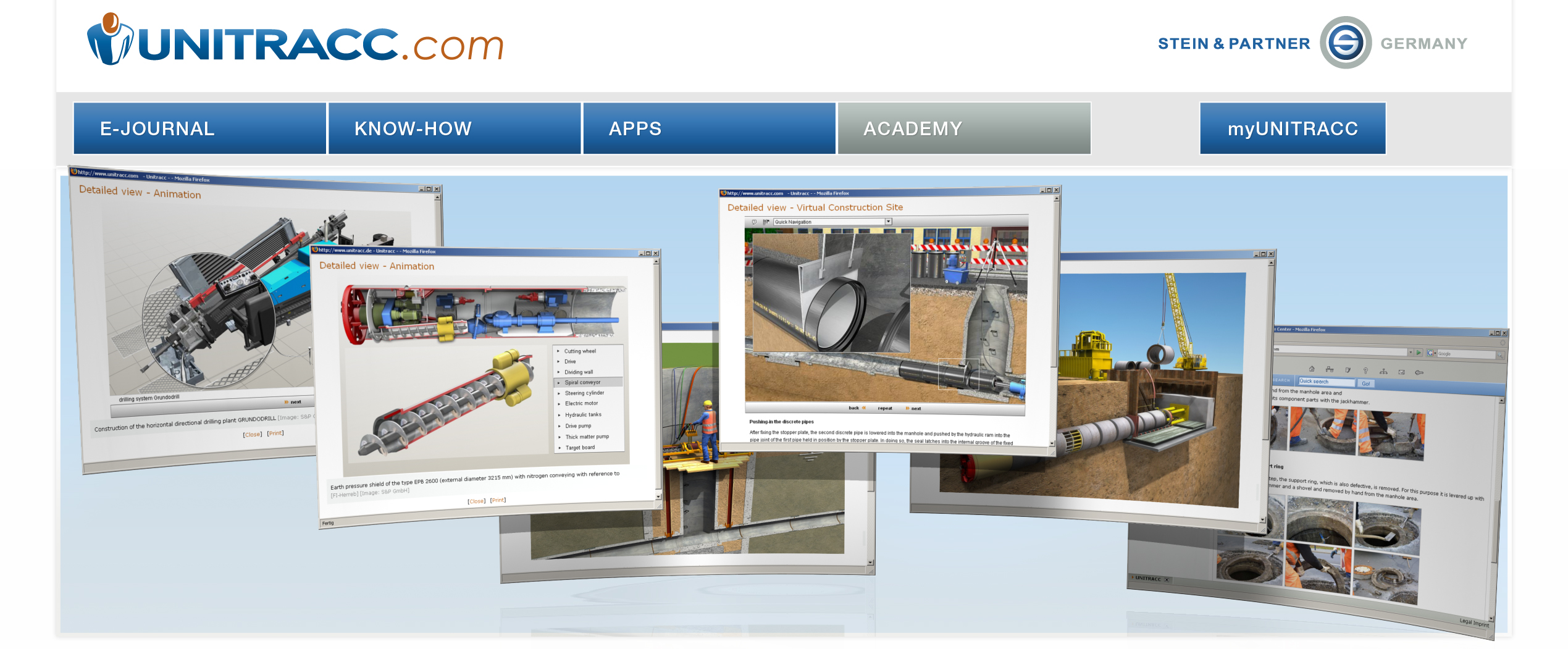
The contents are developed by industry experts from the industry. They enable both experienced engineers to refresh and update their detailed knowledge and those just starting their careers to obtain a comprehensive understanding of the construction and maintenance of drainage systems. The guiding principle of this technical course is to enable all those involved to improve wastewater network performance and environmental protection, and to ensure the protection of the public from the dangers of improper work.
Facts
There are 10 courses available, each is designed as a self-learning unit and they are organised into three thematic blocks. They are delivered via the interactive e-learning platform UNITRACC. The content is structured in such a way that you can determine your own learning speed and time. Each course contains video blogs that provide an introduction and overview of the subject area. Each course ends with an intermediate audit of what has been learned.
Each course can be started at any time and is activated for a period of 3 months.
If you successfully complete all the courses in a thematic block, you can receive the Certificate of Professional Competence for that block. You have 12 months to do this. If you successfully complete all the blocks, you can receive the Consultant Certificate "Construction and Rehabilitation of Sewer Systems". You have 36 months to do this.
The certificate
The demanding, advanced training is completed with a certificate based on the outcome of a final examination. The certificate is issued by IKT - Institute for Underground Infrastructure in cooperation with Prof. Dr.-Ing. Stein & Partner GmbH.
A certificate can be obtained for individual courses (Course Certificate), for a thematic block (Certificate of Professional Competence) and for the entire thematic area (Consultant Certificate "Construction and Rehabilitation of Sewer Systems").
The certificate proves that you are a professionally qualified graduate who understands the respective subject area in all its complexity. Evaluation and supervision are carried out by Prof. Bert Bosseler and Dr. Robert Stein. Both are among Germany's leading wastewater infrastructure experts.
- The Course Certificate includes a written examination and a 15-minute oral exami-nation. To pass the written examination, at least 70% of the maximum possible points must be achieved.
- The Certificate of Professional Competence for a thematic block requires successful participation in each of the written Course Certificate examinations and a 30-minute oral examination.
- The Certified Consultant "Construction and Rehabilitation of Sewer Systems" requires successful completion of the Certificates of Professional Competence across all three thematic blocs and your one-to-one engagement with Prof. Bosseler and Dr. Stein.
Course Directors
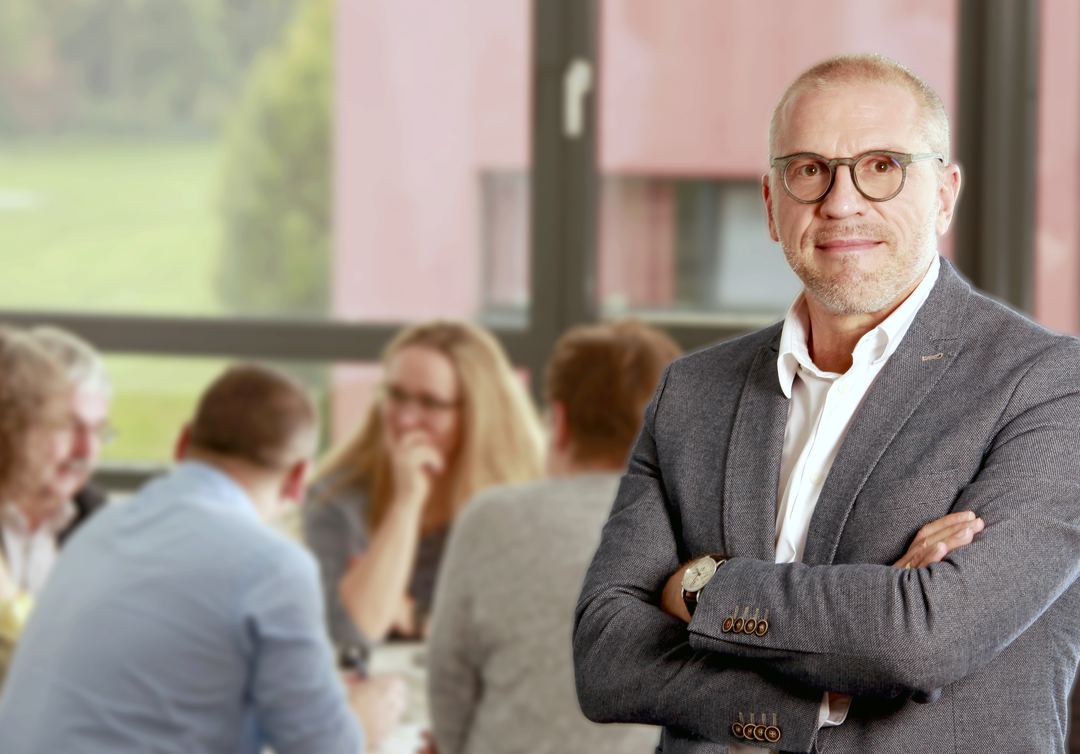
Dr.-Ing. Robert Stein has been working as a planning consulting engineer in the industry for 25 years. As managing director of STEIN Ingenieure he was involved in more than 2,000 projects and root cause analyses. Most notably as the project manager responsible for the approval process, planning, supervision and quality control of Europe`s largest deep tunnel sewage system. In the field of rehabilitation, he advises over 30 cities on optimizing their investment and rehabilitation strategies. Since 1995 he has published over 100 articles, reports, expert reports and feasibility studies. He is the author of the reference books
"Valuation of wastewater networks / Wertermittlung von Abwassernetzen"
"Trenchless Technology for Installation of Cables and Pipelines - 2nd Volume, the chapter on pipe jacking (ATV DIN 18319) and co-author of the
4th edition of the international bestseller "Rehabilitation of Drains and Sewers".

Prof. Dr.-Ing. habil. Bert Bosseler has been Scientific Director of IKT – Institute for Underground Infrastructure for 20 years. He is a visiting lecturer at Leibniz University, Hanover (on underground sewer and pipeline construction) and at the Ruhr University, Bochum (on pipeline maintenance and network management).
His national and international committee work covers:
ISO TC 224 – Service activities relating to drinking water supply systems and wastewater systems
ISO TC 224 /WG11 – Stormwater management
ISO TC 224 /WG15 – Smart water
ISO TC 224 /WG16 – Climate change adaption
ISO 268/SC1 – Smart community infrastructures
ISO 268/SC1/WG6 – Disaster risk reduction
CEN TC 165 – Wastewater engineering
Certificates and costs
|
Theme |
Course |
Course |
Certificate of professional |
|---|---|---|---|
|
Operation & Maintenance |
600 |
|
|
|
700 |
|
||
|
700 |
|
||
|
500 |
|
||
|
|
2,000 |
||
|
Rehabilitation |
600 |
|
|
|
600 |
|
||
|
600 |
|
||
|
COURSE 8: Renovation (focus on CIPP and lining with spirally wound pipes) |
700 |
|
|
|
|
2,000 |
||
|
Open cut construction / |
800 |
|
|
|
800 |
|
||
|
800 |
|
||
|
|
2,000 |
||
|
|
14,800 |
||
|
* Plus tax if necessary |
|||
Individual Online Meetings to become a Certified Consultant
Throughout the consultant course, you can schedule up to 10 individual online meetings with Prof. Bosseler and Dr. Stein to discuss your questions with these experts and receive support, and reassurance.
Prof. Bosseler shares his experience in scientific background knowledge and technical and theoretical argumentation. He assists in the understanding of the engineering concepts. See too: https://www.ikt-online.org/
Dr. Stein and his team support the course participants on their way to becoming a real consultant on the basis of the long-term experience of his consulting engineering firm Stein Ingenieure. Take the chance to discuss specific problems of your work. See too: https://www.stein-ingenieure.com/
The programme in detail
- Learning steps:
- 308
Net learning time incl. exercises and questions: 32 [h]
- Water cycle (transport and storage of water) at a global and regional level
- Interactions in the urban water cycle as well as effects on groundwater and waters
- Facts and figures regarding the global water demand and water exploitation
- Historical development of wastewater collection systems
- Significance of wastewater collection systems in the overall context of water management
- Terms
- Requirements for wastewater collection systems regarding their functionality and performance capacity
- Types of wastewater collection systems Structure and limiting conditions of sewer systems
- Pipes – cross sectional shapes, dimensions, fittings
- Pipe materials
- Pipe connections
- Manholes and structures
- Road catch basin
- Construction methods
- Type and design of the bedding
- Overview of typical intra-urban line types and underground infrastructures
- Introduction to the integral sewer management
- Performance capacity aspects of a drain and sewer system, assessment of the performance capacity by comparing given data to performance capacity requirements, development of a design and its implementation
- Design principles
- Types of wastewater collection systems
- Surface water treatment, use and percolation
- Choice of a drain and sewer system
- Learning steps:
- 417
Net learning time incl. exercises and questions: 40 [h]
- Geotechnical and hydrogeological Principles
- Investigation of the subsoil conditions
- Differences between soil types
- Influences of grain shape and grain size distribution on the practical construction properties of the subsoil
- Different appearances of water in the subsoil
- Determination of the water permeability of the soil for a constructional assessment of the soil.
- Utility Trench Construction
- Rules and regulations
- Requirements for planning, tendering and construction of the pipeline zone
- Trench sloping, benching
- Trench support systems (vertical and horizontal trench shoring system, trench shoring systems)
- Building materials
- Procedures for dewatering
- Process sequences of the open cut method.
- Embedment of Piping
- Rules and regulations
- Requirements for the embedment zone
- Significance of the embedment for the structural stability of the pipeline (flexible and rigid pipes)
- Bedding types
- Influencing factors to ensure high execution quality on the construction site
- Recognizing and assessing errors in construction.
- Installation of pipes
- Alignment
- Lifting systems
- Jointing
- Compliance with the gradient
- Connections of pipes to manholes and structures
- Compaction of the trench backfilling
- Removal of the shoring
- Flowable Fill
- Optimised installation methods
- Compaction test
- Learning steps:
- 385
Net learning time incl. exercises and questions: 40 [h]
- Basic knowledge regarding operation and maintenance
- Solids in sewer systems
- Origin and composition of solids
- Transport behaviour of solids
- Consequences of a contamination with solids
- Deposits in sewer systems
- Cleaning objectives and cleaning strategies
- Development of the cleaning plan
- Determination of the current condition and description of the drain and sewer system
- Cleaning objectives
- Cleaning of drains and sewers
- High-pressure jetting process
- Flushing process
- Mechanical process
- Other methods
- Cleaning of road catch basins
- Cleaning of large profiles
- Manual cleaning using tools and equipment
- Special cleaning systems
- Cleaning of pumping stations
- Cleaning of pressure pipes
- Cleaning of culverts
- Quality control
- Special measures to avoid deposits
- Semi-centralised solid retention Decentralised solid retention
- Learning steps:
- 445
Net learning time incl. exercises and questions: 40 [h]
- Review of performance information, determine the scope of the investigation, review of existing information, inventory update.
- Site investigation by means of excavations (direct and indirect excavation methods), basics of geophysical site investigation
- Inspection from the inside, qualitative and quantitative condition recording (measuring of deviations in position and shape, deformations)
- Tests at man-accessible pipelines and sewers, special procedures for the inspection of partially filled pipelines and sewers,
- Inspection of manholes
- Inspection of road catch basin
- Quality assurance
- Documentation of the inspection
- Application of coding systems using the example of EN 13508-2
- Defects, causes of defects, consequences of defects
- Condition classification and assessment
- Fabric deterioration classification and assessment
- Learning steps:
- 112
Net learning time incl. exercises and questions: 16 [h]
- Requirements for the leak tightness test
- General test conditions
- Test objects and test sections
- Test procedure
- Influence of groundwater conditions
- Steps in leak tightness testing
- Carrying out leak tightness tests
- Planning documents
- Safeguarding measures
- Equipment for leak testing
- Installation of the shut-off elements
- Leak tightness testing of pipes
- Leak tightness test in sections
- Section-by-section leak test
- Water pressure test
- Positive air pressure testing
- Negative air pressure test (Vacuum)
- Leak tightness test of manholes
- Leak tightness test of individual pipe connections
- Socket testing devices
- Qualification of testing personnel
- Requirements for the qualification of the personnel
- Learning steps:
- 280
Net learning time incl. exercises and questions: 24 [h]
- Defects, causes of defects, consequences of defects
- Rehabilitation requirements, functional requirements, performance requirements
- Rehabilitation strategies, development of holistic solutions, hydraulic rehabilitation, environmentally relevant rehabilitation
- Procedures and selection criteria, economic efficiency and decision-making processes
- Structural solutions,
- Operational solutions
- Learning steps:
- 300
Net learning time incl. exercises and questions: 30 [h]
- Historical background to the construction of brickwork and in-situ concrete sewers, effects on large profiles, typical damage to brickwork and in-situ concrete sewers, special aspects in the assessment of the condition of large profiles, (extended investigation programme (test drillings, profometer investigation, measurement of the profile, measurement of the defects, Determination of the carbonation depth of concrete, determination of the chloride load of the concrete), recording of the static boundary conditions along the sewer route, taking of drill cores, pressure tests on brick and mortar - substance determination, taking of reinforcing steel, calculation steps of the static calculation, extended rehabilitation planning, definition of rehabilitation objectives
- Joint rehabilitation, crack injection (crack filling materials, crack characteristics, application areas of filling materials and types of filling, injection equipment)
- Coating of surfaces (preparation of the concrete substrate, thickness of the coating, bonding bridge, mixing and spraying station, application of the coating, quality assurance.
- Learning steps:
- 283
Net learning time incl. exercises and questions: 24 [h]
- Lining with Cured-In-Place Pipes
- Terms and Definitions, Purpose of Linings, Requirements, Durability, Materials of the Composite System, Production and Properties, Curing Mechanisms (UP, VE), Carrier Materials, Requirements for the Carrier Material, Impregnation of the Carrier Material, Material Characteristics of the Composite – Flexural Modulus and Flexural Strength
- Wall Construction of the Lining Tube (Total Wall Thickness, Abrasion Layer, Abrasion Test, Proof of Suitability)
- Static Calculation of Liners (Host Pipe Condition, Imperfections, Material Identification Groups)
- Preparatory Work (Bypassing Flow (Bypass Concept), Cleaning of the Sewer Section, Obstacle Removal, Repair Work (Pre-Profiling), Pre-Sealing for Infiltrating Ground Water, Calibration of Connections, Calibration of the Sewer Section, Preparation of Manholes, Installation of Swelling Tapes and Thermocouples)
- Installation of the Lining Tube (Inserting the Preliner (PE Tube) / Slip Sheet, Inversion with Water, Inversion with Pressurized Air, Winched-in-Place Insertion, Inflation Medium – Internal Pressure, Heat-Initiated Curing / Hot Curing, UV Light Curing, Hybrid Curing for Thick-Walled Lining Tubes)
- Final Work (Leak Tightness Test, Material Tests, Site Sampling and Test Sample / Specimen, Measurement of Composite Thickness, Reconnections to Manholes and Structures, Improper Installation of the Lining Tube, Quality Influences during Installation of the Lining Tube, Lining Observations, Surface Irregularities (Folds)
- Lining with Spirally-Wound Pipes
- Areas of application and limits
- Planning and work preparation
- Materials and profiles (materials used)
- Execution of rehabilitation (work sequence)
- Annular space filling
- Quality assurance
- Static aspects
- Learning steps:
- 400
Net learning time incl. exercises and questions: 40 [h]
- Pipe bursting processes
- Standards and regulations; areas of application; limits of application, effects of the pipe bursting process on the environment
- Dynamic pipe bursting process, static pipe bursting process, hydraulic pipe bursting process,
- Documentation and quality assurance, tensile force monitoring, length changes due to temperature changes, length of the pull-in pit, interruption of the pull-in process
- Damage to the product pipe
- Protection of the product pipeline, Material types of protection and product pipelines
- Statics
- Welding of plastic pipes
- Welding of polyethylene, welding temperature, welding force, welding times
- Factors influencing welding quality
- Welding methods for PE-HD pipes (butt welding, electrofusion welding, extrusion welding)
- Standards and regulations for testing welds
- Gallery Techniques (Heading)
- Basic principles, standards and regulations, boundary conditions, areas and limits of application
- Materials, equipment and installations used
- Preparatory measures
- - Construction work, final work,
- - Documentation and quality assurance
- Learning steps:
- 750
Net learning time incl. exercises and questions: 60 [h]
- Process description
- Pipe jacking (definition, technical components)
- Main jacking station (structure, jacking cylinder, steel thrust ring)
- Intermediate jacking stations (tasks, mode of operation, progress of jacking force, control, planning, disadvantages)
- Shield machine (characteristics, functions, structure and types of shield machines)
- Excavation tools (pick bits, scraper teeth, round shank cutter bits, roller cutters, centre cutters)
- Jacking control (control and steering unit, steering of the jacking works by means of steering cylinders)
- Jacking pipes (terms and definitions, concrete, polymer concrete and steel fibre concrete, fibre cement, vitrified clay, glass fibre reinforced plastics (GRP))
- Jacking control (control, jacking measurement, vertical and horizontal deviations, inclination and rolling, jacking progress, measuring systems, jacking monitoring)
- Jacking forces
- Obstacle removal
- Start and target shafts (universal shaft construction, shafts with non-removable lining, sinking shaft method, exit and entry openings)
- Faults and consequences of failure (damage during pipe jacking)
- Micro tunnelling (technical components, screw conveyance, hydraulic conveyance, pneumatic conveyance, scraper conveyance, with soil displacement)
Study materials
The following study material will be available:
- The course textbook from Prof. Bosseler
- The slides of all video lectures from Prof. Bosseler
- A verbatim transcript of all video lectures from Prof. Bosseler
- Full access to the entire UNITRACC knowledge universe
- The course materials are available in script form
In addition, during all phases of the Certified Consultant program you can contact Professor Bosseler and Dr. Stein directly and arrange individual meetings as a video conference to clarify open questions.
Your contact person
Your contact person for questions regarding the booking is Ms Katrin Droste from visaplan GmbH.
For technical questions concerning course content and certification as a "certified consutant", she can also arrange contact for you with the course directors.
You can reach Ms Droste by e-mail at katrin.droste@visaplan.com
Organiser
The training is organised by Prof. Dr.-Ing. STEIN & Partner GmbH (www.stein.de/en) and the IKT - Institute for Underground Infrastructure (www.ikt-online.org).

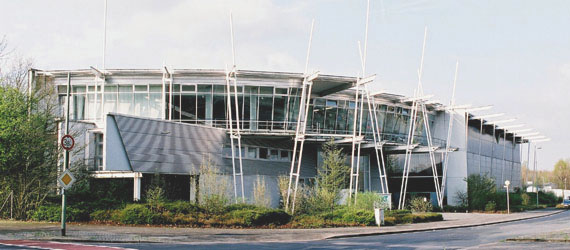
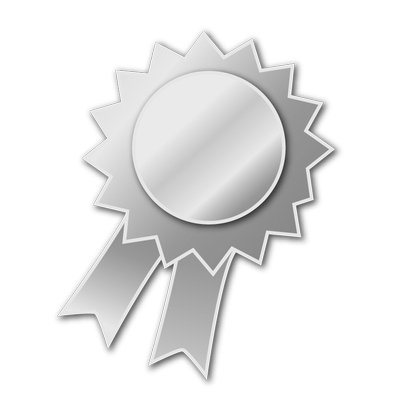 Certificate of competence “O&M”
Certificate of competence “O&M”